Anniversary Gallery
To celebrate our 30th anniversary we've created this special gallery page. A 30 for 30 showcase of the wonderful sites, stories and people that have made Heritage Open Days so magical over the years.
Click the images below to read the stories.
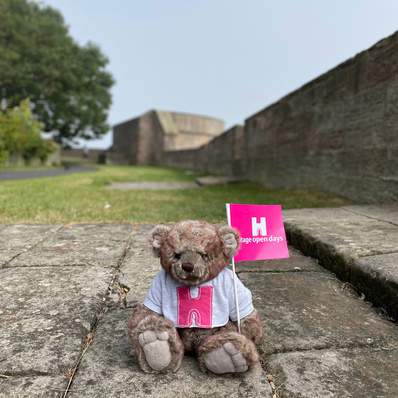

The Mascot
Berwick-upon-Tweed HODs, Berwick-upon-Tweed, Northumberland
After participating in Heritage Open Days since the first festival in 1994 we decided in 2021 that it was time for our local offering to have a mascot and that is when Bari Bear was born. Our furry brown friend was chosen as a nod to the seal of Berwick, which has contained a brown bear since the 13th century and this emblem can be seen throughout the town. Bari has become an iconic feature of our local HODs events, he proudly sits on the front of our annual brochures and pops up a lot on our social media and website. His name (pronounced Bar-ee) comes from the local word for ‘good’ or ‘lovely’. It can be easy to forget how wonderful where you live is but Heritage Open Days helps transform the town every year for visitors and locals to explore. Bari symbolises our passion for bringing the fascinating history of our town to wider attention plus the fun and enjoyment that can be had exploring it.
(Image: Berwick HODs)
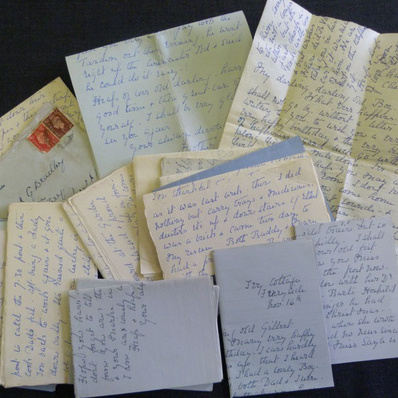

The Love Letters
Oswestry Town Museum, Oswestry, Shropshire
In 2017 extra funding from players of Peoples Postcode Lottery established the Unsung Stories arts commission. This enabled the story of Gilbert & Gordon, two gay soldiers in WWII, to be shared and explored in a project that became special to the hearts of many, and continues to grow today. The two men wrote letters while Gilbert was based at the army camp in Oswestry, which were discovered on e-bay by the volunteer who established the local museum– a museum set up after the success of the town’s first Heritage Open Day. Inspired by the letters the project artists, Olivia Winteringham and KILN Ensemble, asked people to consider the meaning of love and write their own notes. From ink, to ash, to diamond – these new letters were dropped into a special postbox where they were burnt to ash which was collected to make a diamond ring. This ring is now on display at the museum and holds the essence of almost 600 secret love letters from around the world. The story brought the LBGTQ+ scene to the forefront of modern 'history' and remains as much in demand now as when it was first uncovered. There continue to be hundreds of requests for talks from across the country and a book is being written. The interest also remains global, with a short film released in 2021 and a full Hollywood script currently in development. The letters talked about a ‘love for all the world to see’ and through this project and the tireless work of the Oswestry volunteers Gilbert & Gordon’s words continue to be honoured.
(Image: Oswestry Town Museum)
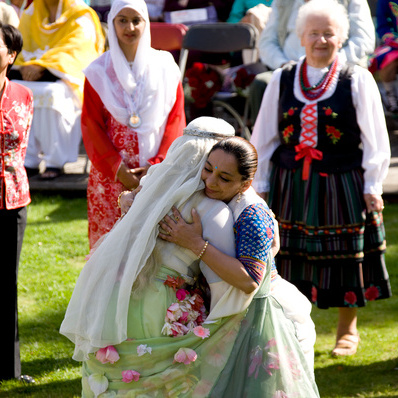

The Sisters
Godiva Trust Coventry Heritage, Arts & Community Group, Coventry, West Midlands
In 1999 Pru Porretta, a qualified Tourist Guide, discovered a lost city festival dedicated to the Anglo-Saxon noblewoman, Lady Godiva, that hadn’t been shared or celebrated for over 500 years. Following a lot of hard work Pru staged a recreation for that September’s Heritage Open Days. Encouraged by the response the festival has been repeated each year since, expanding to now include over 50 ‘Godiva Sisters’, women who live in Coventry but have their roots in other lands. A procession involving choirs, musicians and special banners created by each community group is led through the city by their Godiva Sister to the Priory Gardens, site of the city’s first cathedral founded by the original Lady Godiva. Participating in Heritage Open Days has inspired the team to create further educational workshops, heritage tours, peace and citizenship programmes throughout the year. They’ve gone from strength to strength and been recognised locally and nationally with a 2011 Coventry City Council Community Champions Award for cultural diversity and a 2018 Queens Award.
(Image: Godiva Trust)
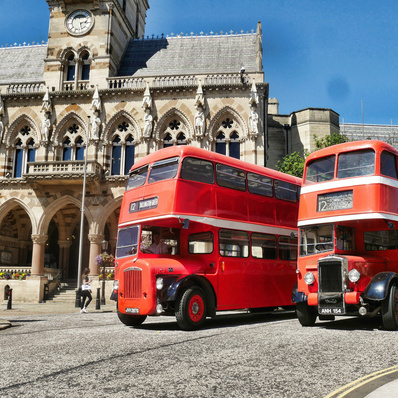

The Buses
Northampton Transport Heritage, Northamptonshire
The heritage buses have been rattling around Northampton and beyond from day one of Heritage Open Days. The vehicles are, historically, just as important to the town’s story as any building of note. As a child growing up in Northampton in the 1960s and 1970s, nothing would set the heart racing faster than a trip into town on a wonderful red Daimler double-decker bus! One solitary bus featured in 1994 but the number of buses, and the routes they take, have multiplied in the years since, thanks to a great team of volunteers at Northampton Transport Heritage. Now, the buses not only take festival goers around Northampton, to explore the town’s fantastic history and heritage, they also go further afield to visit the towns of Daventry and Towcester and several village locations. The festival is the biggest day out in the group’s calendar and while the buses provide the link to the county’s places of interest they have become firmly established as an essential feature of Heritage Open Days in their own right. Locals and visitors arrive in their droves to ride on these Northampton icons and their day is not complete until they have done so.
(Image: Northampton Transport Heritage)
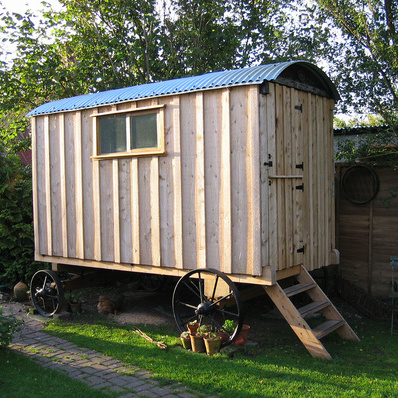

The Shepherd's Hut
Barford History & Community Group, Barford, Norfolk
In September 2012 the opening of a restored shepherd’s hut in one villager’s garden caused quite a stir. Alongside the local church the owner had decided to share this wonderful piece of agricultural heritage through the festival. Not just showing people the hut but also putting on a display about the area’s rich agricultural history. Over 200 people visited, their enthusiasm sparking the creation of the Barford History & Community Group. The group not only continued to explore and share their history with a series of talks and events throughout the year but also worked to build capacity in the community, setting up adult IT courses. They also contributed to the wider Heritage Open Days festival community by sharing their experiences at organiser workshops – and were recognised for their inspiring work with our ‘Community Champions’ award in 2014.
(Image: Barford History & Community Group)
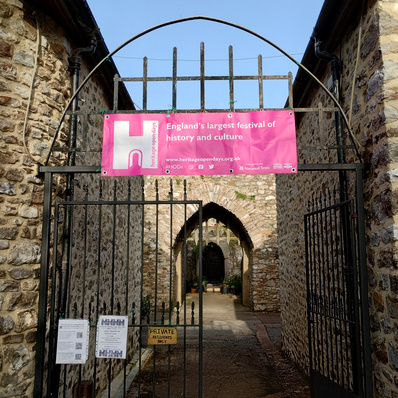

The Historic Home
Hemyock Castle, Hemyock, Devon
Opening for the first Heritage Open Days in 1994 we were overwhelmed by over 1,000 visitors; showing the pent-up demand for visiting even modest events at small historic sites. This has continued ever since, and we’ve greatly enjoyed participating in the festival, meeting a wide range of interesting visitors who often bring stories and extra information to add to the history. Each year we do something special, related to the site, and try to cooperate with other local events. Particularly popular years have included The Civil War Re-enactment Society and a display of Sri Lankan dance from a young nurse who also brought in cultural artefacts. More recently, we’ve met the challenges of Covid, including providing virtual events, and adapting the national themes to suit our historic home. For both our parents, hosting Heritage Open Days was the final acts of their lives. They were committed to making history interesting and accessible for all. We continue this popular event in their memories.
(Image: Hemyock Castle)
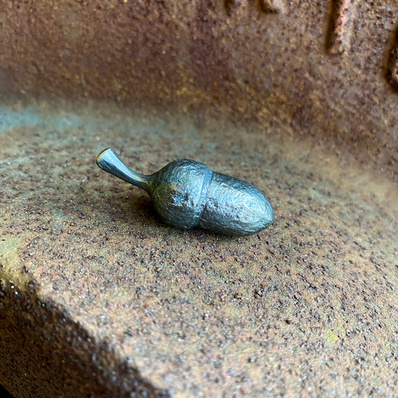

The Fairy Tale
Rowhurst, Fire & Iron Gallery, Leatherhead, Surrey
For thirty years I’ve opened my home and the adjacent blacksmithing forge I run, for Heritage Open Days. Time has flown. What began as a ‘simple’ opening has become so much more. Nearly stopping after a pandemic pause, I am so glad the local coordinators prodded me to keep going, as the last few years have felt like a fairy tale: from the tiniest acorn grew the most heartwarming community magic. I always find the festival themes valuable – pushing me to explore varied aspects of my home’s history. In 2022 I took inspiration from the inventive writer, Jane Austen, and planned to play music featured in her book ‘Emma’ (undoubtedly set in my local landscape, which she visited). As I prepared for the event I was offered help from two Ukrainian refugees, Oleksii and Daria, who cleared our tangled grounds ready to receive visitors. As we navigated the barriers of brambles and language, they burst into incredible song – a bass baritone and a soprano. I invited them to sing at our event while my son played the piano. It was… extraordinary. Visitors were enchanted. Here we all were, singing around a piano at an event which told the story of people visiting each other’s houses and singing around pianos more than 200 years earlier. And that was just the beginning. Following their stirring performance Oleksii and Daria are now studying music and their beautiful voices are helping to raise funds to aid others. They sang at St. Paul’s Cathedral and the Royal Opera House, but they also still sing with us, last year raising over £500 in a woodland charity concert to end our Heritage Open Days event. Real birds flew in from the ancient wood to sing with them, as real acorns dropped rhythmically onto the forge roof.
I remember the local organiser who encouraged me to first take part in Heritage Open Days. Painfully shy, I knew so little, but I grew from there; the history has grown from there; the audience has grown from there. HODs gave me a way forward – a clear route to pursue. It provided me with a network of remarkable friends, experts and enthusiasts, and enabled me to make connections I cherish today. Acorns are always worth planting.
(Image: Fire & Iron)
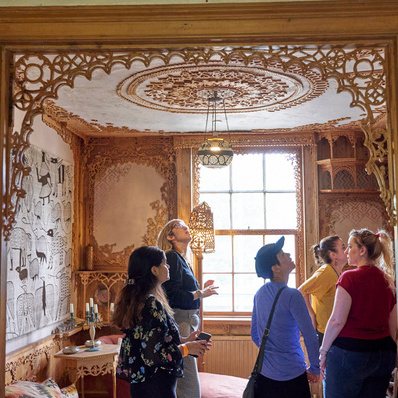

The Hand-carved House
575 Wandsworth Road (National Trust), London, Greater London
The unique home of Khadambi Asalache, a Kenyan-born poet, novelist and civil servant is one of the National Trust’s smallest and most recent properties. It is astonishing for its intricate hand-carved fretwork covering all the walls. We've participated in Heritage Open Days for the last five years, each festival giving us the opportunity to test new approaches to open up access to the building and reach new audiences in creative ways. From family led taster tours to virtual experiences connecting with people across the globe, and poetry and pizza nights for young people, HODs has been instrumental on our journey towards becoming a more inclusive and welcoming place, shaping our learnings and integrating new ways of working into our core offer. For 2024’s festival we plan to build on our virtual engagement by working with an artist from another country. We hope to develop a hybrid programme of talks and creative workshops inspired by the national theme of Routes-Networks-Connections and the textiles in our collection from across the globe.
(Image: National Trust Images / Arnhel de Serra)
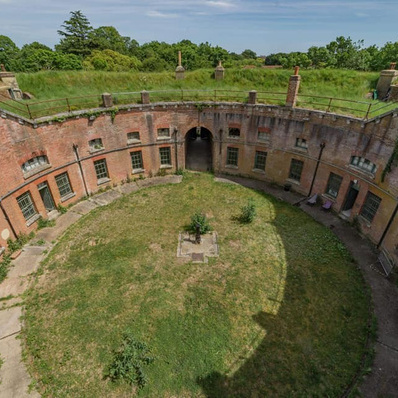

The Fort
Fort Rowner Keep, Ministry of Defence & Gosport Heritage Open Days, Gosport, Hampshire
In 1992 Gosport was one of the first towns to organise activities for a pilot that became Heritage Open Days. A tour of a Victorian fort was one of the first events offered and has continued to be a highlight of their programme. Part of Portsmouth Harbour defences, Fort Rowner is a Grade II listed building within HMS Sultan, an operational Naval establishment. The first guided tour allowed visitors around the Parade Ground with a glimpse inside the Keep. It generated such an enthusiastic response that more tours followed. For military operational reasons, the fort can only open once a year, Heritage Open Days giving 320 visitors annually the unique opportunity to look beyond the drawbridge. Since 2016 a local lady, Sarah Wrapson, has worked on the maintenance of the site and now leads the annual tours showing the progress she and her team have made in clearing the area of rubbish, conserving the fabric of the building, and recently seeing it removed from the Heritage At Risk Register. Each year festival visitors also swell the numbers of Sarah’s helpers ensuring the future of the site.
Fort Rowner is just one of several offers for Heritage Open Days visitors at HMS Sultan, and across the wider town. Gosport has long been one of the most vibrant hubs for the festival and leads the way in considering ways to increase access. Not just opening up locked sites, but also including object handling sessions, and highlighting ‘quiet times’ and access facilities for visitors in each event’s listing.
(Image: Sarah Wrapson)
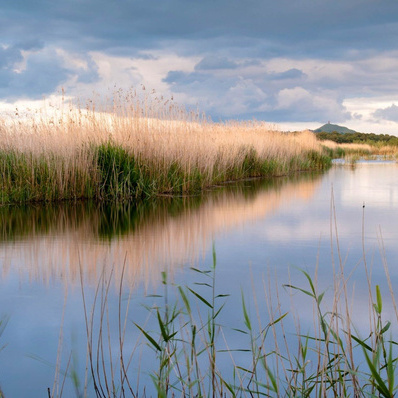

The Nature Reserves
Natural England
In 2017 we started working with Natural England, the government’s adviser for the natural environment. They arranged to open up and run events at seven National Nature Reserves across the country. These sites have been specially designated to protect our most important and rare wildlife and geology. They also contain a wealth of archaeological and historic sites, such as the Sweet Track – an extraordinary piece of pre-historic engineering in Somerset. Events included a guided walk along the line of the track with the Ranger, and a family fun open day at Escrick Duck Decoy in North Yorkshire. Together we were delighted to showcase, and help more people to understand, our green heritage and the rich stories to be found within our beautiful landscapes.
(Image: Shapwick Heath NNR at the heart of the Avalon Marshes / Natural England)
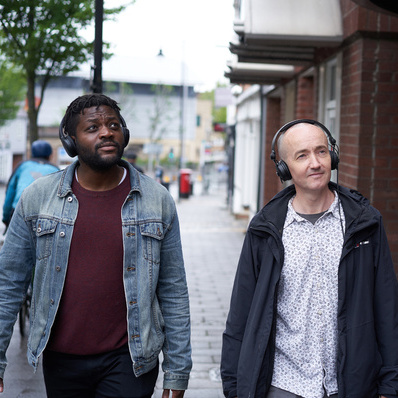

The Sound Walks
Historic England + Sound UK
In 2021 Historic England worked with us to create a special series of audio trails for the festival. Sound UK were commissioned to work with local artists and communities in six towns across the country to develop the self-guided, immersive sound walks, exploring the history and magic of local high streets. Working through the unexpected knots and hurdles of the pandemic, they were launched in time for the festival alongside illustrative maps. Each one offering a distinctive journey of discovery – from market traders in Great Yarmouth, to the Black History Mural in Reading, and an arcade in Hull. Today the trails remain available for people to download and enjoy in their own time.
(Image: James John)
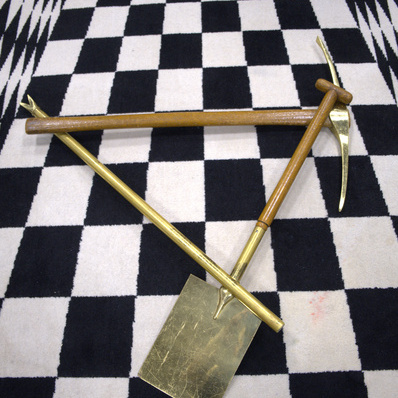

The Masonic Hall
Preston Masonic Hall, Preston, Lancashire
Masons met at the Bull and Royal Hotel until 1944 when the Mayor of Preston found a new home for the lodge at Saul Street Primitive Methodist Chapel. The chapel made a great lodge room with seats bought new from Gaumont Kalee, manufacturers of theatre and cinema seating. Those chairs, along with masonic chairs from the mid 1800s are still in use today. Participating in Heritage Open Days enables us to showcase this historical furniture and work with local groups – in 2023 the superb ballroom was turned over to local artists and photographers to curate a free exhibition. Opening the Hall for the festival has demonstrated what a great community asset there is in Preston and now many groups use it that would not have known about it before.
(Image: Masonic tools symbolically laid on the chequerboard 'tunnel' / Preston Masonic Hall)
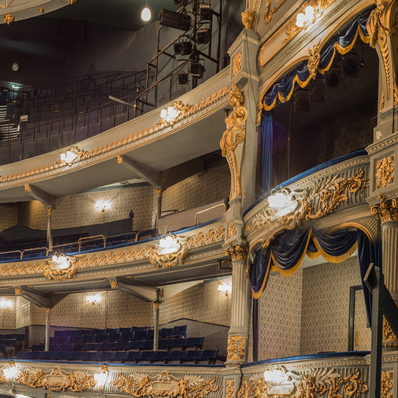

The Theatre
Tyne Theatre & Opera House, Newcastle upon Tyne, Tyne & Wear
Tyne Theatre & Opera House is a Grade I listed theatre of huge historic importance, having one of the only surviving examples of Victorian wooden modular stage machinery in the UK. Since 2016 we have welcomed visitors for the festival, giving them tours of our front of house, stage, and understage areas. Their highlight is often the demonstration of our Thunder Run (originally built in 1867), along with the ghost story that accompanies it. We are delighted that some festival visitors have now become volunteers, working with us to restore and maintain our stage machinery, or to develop a searchable database of productions at the theatre between 1867-1919. Heritage Open Days allow us to reach a wider audience, engage with the community, and to share the unique history of our theatre. We hope to continue doing so for many years, with our ongoing restoration projects bringing something new each time, so watch this space!
(Image: Boxes stage right at the beautiful Tyne Theatre & Opera House / TT&OH)
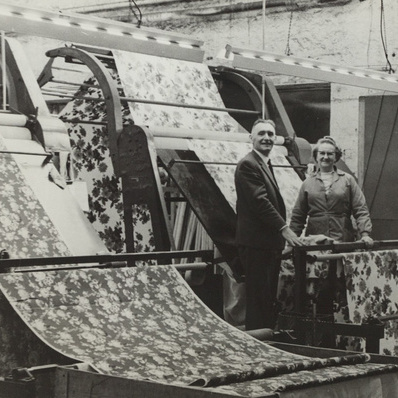

The Factory
Standfast & Barracks, Lancaster, Lancashire
We have been opening our factory doors to the public for 8 years now as part of Heritage Open Days. Visitors see the journey of the fabric from preparation, conventional and digital printing, and finishing, alongside a visit to the design studio to see how the life of a design begins. A favourite is always a glimpse into the archive, where we house over 20,000 documents ranging from textiles, quilts and wallpaper dating back to the 17th century. Fabrics have been printed on this site since 1924, making this year (2024) extra special for us as we celebrate our centenary. The building, which dates back to 1864, has a rich history as a wagon works and prisoner of war camp. Our tours are led by the people who work at Standfast & Barracks, making them personal and insightful.
(Image: Standfast & Barracks)
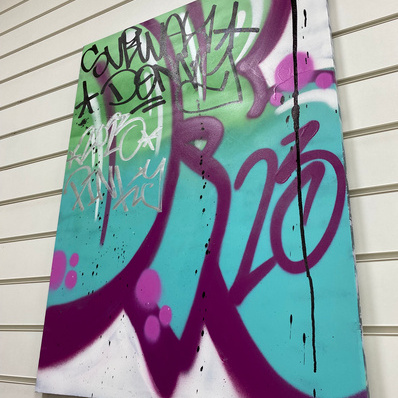

The Hip Hop Crew
Powered by Hip Hop (UC Crew), St Helens, Merseyside
Our crew has run festival events since 2020 but the perfect theme of Creativity Unwrapped in 2023 led to the best yet. The Hip Hop Heritage exhibition with a graffiti and music focus played a significant role in celebrating and reviving the local Hip Hop community and its hidden culture. It gave visitors the opportunity to delve into our town's vibrant Hip Hop history through a mix of visual and musical experiences that highlighted local talent and uncovered historical findings. The exhibition included an array of activities and showcases, such as graffiti art classes, break dance performances, DJ-ing workshops, and displays of local Hip Hop legends. The interactive workshops educated visitors about the significant role graffiti art, rapping and DJ-ing played in the local cultural landscape and how it impacted the world, all from the most unlikely town in the North West of England.
(Image: Tom Glynn)
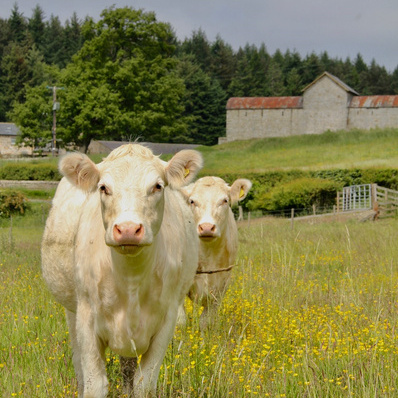

The Farm
Cragend Farm, Rothbury, Northumberland
We have a unique farm with hydraulic machinery installed by Lord Armstrong of Cragside in the 1880s to show that water power could drive anything. As an engineer and inventor of machinery that used natural resources he was a leader in taking care of what we now know as our carbon footprint. He knew that fossil fuels have a finite life and looked to water to help power other areas that had historically been driven by coal and steam. We have renovated this ancient farm and so his vision, the turbines and hoist used to power agricultural machinery can be seen today. We love sharing this unique history of our site with visitors on special Heritage Open Days tours alongside the wildlfe and British rare-breeds that roam the estate. One year a guest commented that they’d come along as a member of their family was known to have stayed at Cragend Farm in the early 20th century. We were able to look up their name on a Graffiti Report done by archaeologists for a wider project recording the historic detail of the farm, and there it was! In 1903 the visitor’s grandfather had stayed at our farm and went on to be a cattle judge in the Peak District, wow!
(Image: Rare Breed Whitebred Shorthorn cattle 'Queenie' and 'Holly' / Cragend Farm)
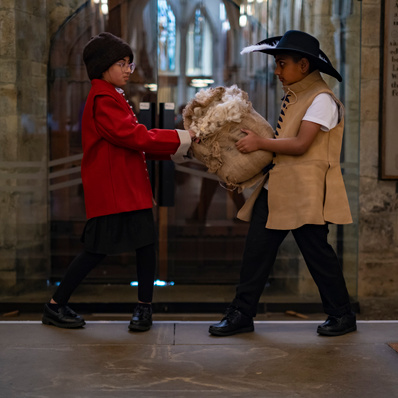

The Cathedral
Bradford Cathedral, Bradford, West Yorkshire
On Heritage Open Days we are a place and space where everybody feels welcome and where those who visit, of whatever age, faith or background, see it as their Bradford Cathedral. For many years though, the Cathedral was an under-visited and little-known destination, even within the local area. This changed after we began participating in the festival and new engagement posts were added to the team in 2018. Running free events that inspire wonder, deepen knowledge and spark questions, have helped us to change people’s perceptions of the city, both locally and beyond. They’ve given us opportunities to test things out and highlight that Bradford’s story goes much further back than the Industrial Revolution. In 2019, inspired by the festival’s ‘People Power’ theme, we explored the little known history of a local Civil War skirmish and its link to the woolsack icon on our Cathedral crest. It really resonated with visitors, so we have built on this to include the story on all educational visits and guided tours. We look forward to continuing this work, showcasing the Cathedral as a treasure trove on people’s doorsteps, ripe for exploring.
(Image: Tusselling over the woolsack / Bradford Cathedral)
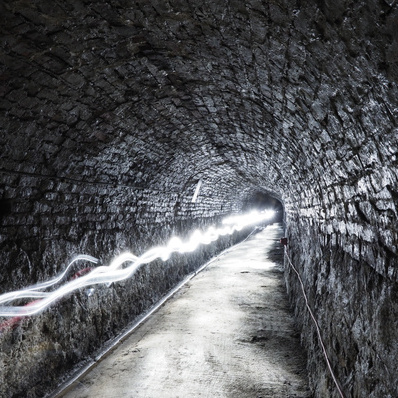

The Tunnel
Ouseburn Trust, Newcastle upon Tyne, Tyne & Wear
Heritage Open Days is an opportunity for us to trial new types of events, whilst giving our volunteers the opportunity to get creative. Over the last ten years, we’ve hosted historical reenactors and collaborated with other local organisations. The festival always attracts new audiences who may not have joined us for an underground adventure otherwise. As a paid, pre-booked experience, the Victoria Tunnel attracts audiences who are actively seeking our heritage experiences but HODs helps us swing open our doors and invite new people to visit the space. In 2021, a cycling group of over a dozen people randomly stumbled across some hustle and bustle outside a big red door. They stopped to take a look and discovered an underground historic marvel. This was a particularly special experience given the pandemic closures the Tunnel faced the year before.
(Image: Iain Kitt)
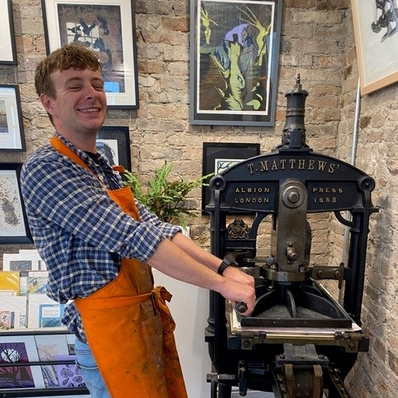

The Print Studio
Eastgate Studio, Beverley, East Riding of Yorkshire
Eastgate Studio is an artist run print studio and gallery with six traditional printmaking workshops and a gallery showcasing a wide range of print techniques including mezzotint, linocut and dry point. Its aim is to raise awareness of traditional printmaking so over Heritage Open Days we give visitors the opportunity to see their 1888 Albion flatbed press and locally made Hawthorne etching press in operation. Studio members pull prints from plates relating to the historic town of Beverley that have been created at the studio. The Albion Press once belonged to the Curwen Press of Plaistow, East London, which pioneered the collaboration between artist, printing and publishing. So famous artists such as Paul Nash, Graham Sutherland, and Eric Ravillious, could have taken prints from this very press!
(Image: Eastgate Studio)
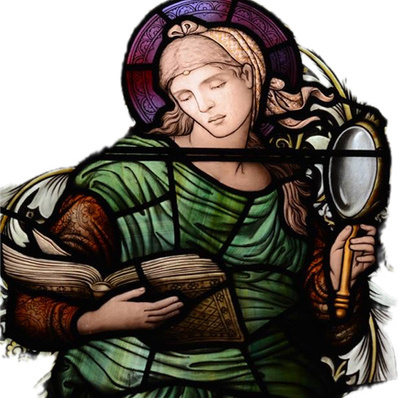

The Meeting House
The Old Meeting House, Mansfield, Nottinghamshire
Founded in 1664 and still going strong, our intriguing Chapel is a hidden gem with a lot of heart. So well hidden, visitors drawn in by pink Heritage Open Days bunting often remark that they did not know we are here in the very centre of town. The festival has been a highlight of our yearly calendar since 2013, enabling our enthusiastic volunteers to work in partnership locally and beyond to create a weekend of fun and friendship with talks, displays and activities for all generations. In 2020 we planned an ambitious programme, “Hands Across The Ocean”, inspired by the 400th anniversary of the Mayflower Pilgrims, linking with Mansfield Massachusetts, close to Plymouth Rock, USA. Covid threatened it all, but learning new technology quickly and with helpful advice from the national team, we overcame restrictions and created something extra special. Talks by entertaining historians in both Mansfields were zoomed successfully and whilst we could not take people on our popular heritage walk, a virtual tour of our Chapel worked well. Zoom also enabled a dual service and organ recital to be streamed on both sides of the Atlantic simultaneously. This successful weekend changed our approach, opening up ways of presenting our topic far beyond the confines of our homes, Chapel and town and proved to be an inspiring experience for everyone.
(Image: One of the beautiful windows at Mansfield Unitarian Meeting House / Mansfield Unitarians)
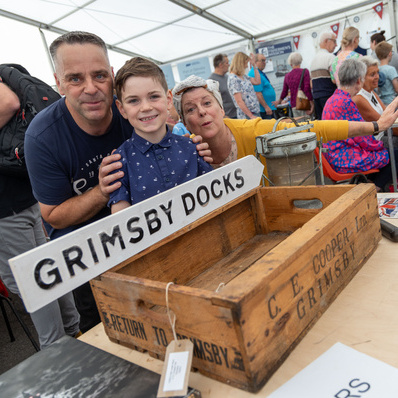

The Port
Associated British Ports (Kasbah Quarter, Port of Grimsby), Grimsby, Lincolnshire
The Port of Grimsby is the world’s largest offshore wind operations and maintenance hub, the UK's largest automotive distribution centre, and home to the UK's largest seafood processing centre. We’ve been running events to engage visitors with its historic Kasbah Quarter through the festival for several years – including virtual options during the pandemic. 2023 was our best year yet; 2,000 people explored the buildings being renovated, joined a guided walk, listened to a talk, or viewed an exhibition about the history of the port and the important part it’s played in the town. People's enthusiasm for the site has seen us continue to share its history through other events and inspired our tenants to showcase their buildings too. We’ve also connected with the retired fishing community engaging them in talks and delivering guided walks for the festival and beyond, sharing their rich stories and experiences with local schools.
(Image: Associated British Ports)
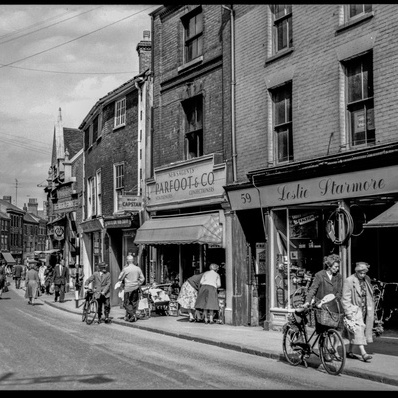

The Exhibition
The Forum Trust - Portraits of Life, Norwich, Norfolk
After WWII and redevelopment in the 70s, some of the streets of Norwich looked very different; gone were the rows of terraced houses and narrow shopping streets. A professional photographer, Jack Roberts, captured some of those areas before they were redeveloped, but his negatives lay forgotten until 2019 when they were digitised and exhibited for the first time. Uncovering further this period of Norwich’s social history, 25 people responded to a call-out to local residents who had lived and worked in the area. Their stories and memories were produced as oral history recordings and an interactive map helped bring Jack’s photographs to life. Around 3,500 people visited the exhibition. Local residents to international visitors from as far afield as the USA and Brazil enjoyed exploring Norwich’s rich history and learning about its way of life from the very people who defined these communities. The visual, audible and interactive elements made the exhibition fully accessible and the digital images and oral history recordings were deposited at Norfolk Record Office for preservation and continued access.
(Image: Jack Roberts)
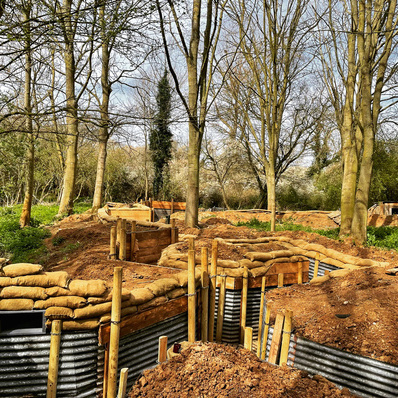

The War Huts
Great War Huts, Bury St Edmunds, Suffolk
Nestled in the beautiful Suffolk countryside, Great War Huts has proved to be an important heritage project, restoring and preserving original surviving First World War buildings. These huts have given the Great War Huts team the opportunity to host engaging exhibitions and displays including the popular Heritage Open Days event ‘Drawers for Wars’, showcasing military underwear from 1900 to the present day! By choosing subjects that the wider public can relate to, and looking at many aspects of the war not usually covered, Great War Huts is reaching a much wider audience than originally anticipated. Visitors and schools now travel to the site from every part of the United Kingdom to visit the huts, and the carefully reconstructed Trenches, to learn about this important part of our history.
(Image: Great War Huts)
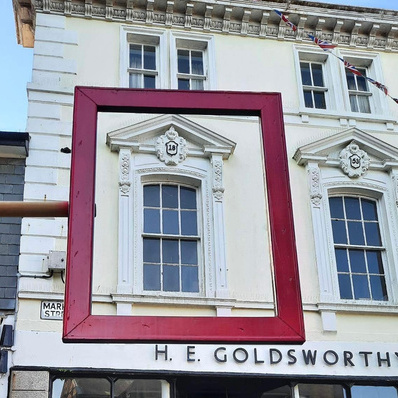

The Creative Town
Liskeard Unlocked, Liskeard, Cornwall
Liskeard Unlocked brings together a wide range of local organisations (Town Council, museums, community centre and other buildings), developing and publicising activities for the festival. We’re incredibly proud of our programme and how everyone comes together to pull it all off. Each year the event morphs a bit and changes, but it’s always good – in 2023 we loved the Creativity Unwrapped theme and set up selfie frames round the town encouraging people to see local places from new angles. We also held workshops for adults and children to create artwork based on the town's historic buildings and displayed the results in bus shelters. Heritage Open Days has provided a focus for us to work together and develop new activities celebrating the town's culture and heritage.
(Image: Liskeard Unlocked)
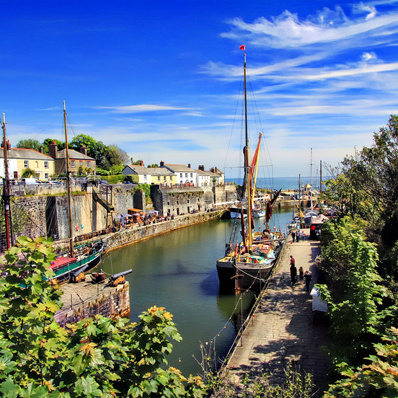

The Sailing Barge
Lady Daphne, Charlestown, Cornwall
Lady Daphne is a 101 year old sailing barge relocated to a UNESCO Heritage Port in Cornwall as part of her ongoing journey. She carried goods from London to Cornwall in the 1920s and 30s, returning with China Clay for the paper mills of Kent. As current custodians we sailed her back to Charlestown to celebrate this history and share her story. Since being here we have built a strong connection to the local community and offer a wide variety of events onboard. We love showing visitors around the barge and in September 2023 we ran our first Heritage Open Days, which drew a record number of visitors over the weekend to look at our onboard exhibition about her unique history. Today we have been appointed as Static Flagship for 2024 by National Historic Ships in recognition of the extensive programme of events we have planned. This is a great honour and wonderful recognition of how far we have come since our early days of ownership when we had to take on significant restoration to save Lady Daphne from certain decline.
(Image: Paul Gast)
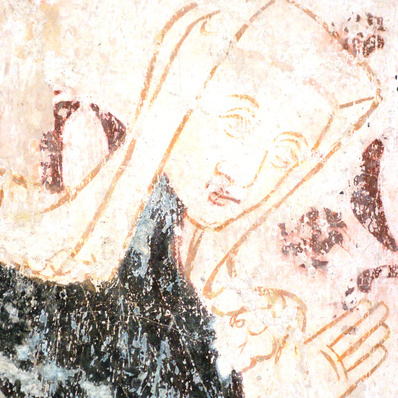

The Ancient Monument
Bradwell Abbey, Milton Keynes City Discovery Centre, Milton Keynes, Buckinghamshire
Bradwell Abbey is a Scheduled Ancient Monument, a hidden gem in the heart of a new city. We’ve been participating in Heritage Open Days for over 14 years, running a medieval themed day with family-friendly activities such as archery, birds of prey demonstrations and re-enactors. This has helped us connect with the local community to build pride in the area and a sense of place. As a public site it is able to be visited any time but running these events has built support and awareness. This has enabled us to work with the local council to raise funds for vital conservation work. Local people have also formed a Friends group, which supports us by running tours, volunteering at events and gardening. Maintenance of the site has been vastly improved and local people are able to enjoy more of it, such as the woodland walk, public art and restored pilgrimage chapel.
(Image: The extraordinary medieval wall paintings conserved for future generations at the Abbey / City Discovery Centre)
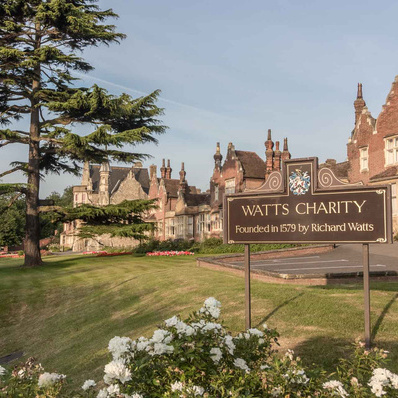

The Almshouses
Watts Almshouses - Richard Watts Charities, Rochester, Kent
Since 2013 residents at Watts Almshouses have opened their home to over 2,000 visitors during Heritage Open Days. The enthusiasm and genuine delight people show as they walk through the doors is contagious. Many are local, and having passed by for years wondering what goes on behind the beautiful façade, finally see for themselves when they are welcomed in. Some are visiting due a family connection – one lady remembered visiting her aunt, a resident here in the 1950s, and pretending to her friends that she lived here herself. For others it is all about the building, for some the cake! The mystery around the building comes in part from the layout; most residents’ doors open at the rear of the grounds, so it’s in the back street away from the public gaze that most of the comings and goings takes place. Watts Almshouses continue to bring people together, with Heritage Open Days helping more people soak up its special atmosphere of community and conversation.
(Image: Deryck Obray)
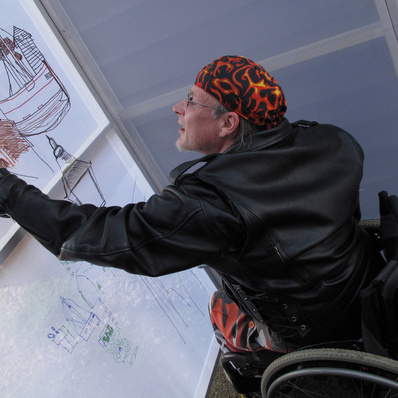

The Net Huts
'Creative Landscapes' - Accentuate, Hastings, East Sussex
43 unique wooden huts, used to store fishing gear for over 100 years, still stand on the Hastings shore known as The Stade (an old word for ‘landing place’). In 2010 they were a key part of a special Heritage Open Days programme organised for a multi-agency partnership project with accessibility at its core. Two disabled artists were commissioned to create new work exploring the town’s heritage and engage people over the festival in creative ways. Lynn Weddle worked with a group from Sussex Autism to produce a photo trail around the Stade, while Sally Booth ran family workshops at the museum and set up a brilliant drawing tent nestled between and inspired by the net huts. One of these extraordinary structures was also open for people to explore, and provided the venue for a film screening of archive footage and interviews with the local community. As part of the wider legacy work of the project a local steering group was established and the Stade Education Project provided additional training for their volunteer tour guides making them more confident in working with disabled visitors.
(Image: John Cheves)
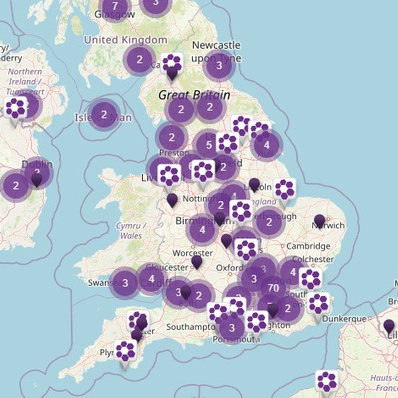

The Wikithons
Women's Engineering Society (WES) + Wellcome Collection
In 2019 we ran our first wikithons – training sessions to help people edit Wikipedia, one of the world’s most visited websites. This was part of a partnership with WES that built on our Extraordinary Women work and helped them celebrate their centenary. Together we aimed to raise awareness of the long history of women in engineering and put more women engineers on the map – literally. A new map was created linked to Wikidata, the database behind Wikipedia that also generates answers for things like ‘Alexa’. In just a few hours 11 editors at our first wikithon published 5 new articles, improved 19 others, and added so many tags into Wikidata that we saw the map turn purple in real time! Through this partnership we shared our work at the Women’s History Network conference, added new links to our Wall of Women poster and saw a copy of it saved for the Women’s Library at LSE. We also created a downloadable resource available on Wikicommons for people to run their own events. Our work with WES continues today – connecting their expertise and archive resources with local communities to tell more stories in person and online.
The Conservators
Icon (The Institute of Conservation)
Following a chat over a cuppa at a conference we connected with Icon in 2022 to raise awareness of the work of conservators. Through a simple but effective combination of promotion and behind the scenes matchmaking between our network and theirs, we’ve seen an increase in the number of engaging events highlighting conservation, particularly those giving visitors the opportunity to meet the experts. Alongside exclusive studio tours we’ve been delighted by events as varied as: a horologist caring for clocks in a Sussex museum, historic papers getting some TLC at a village school in South Yorkshire, medieval misericords being cleaned at a church in Worcestershire, and even knitted bugs used to explain pest control at a historic house in Kent!
(Image: Karoline Sofie Hennum and Historic Dockyard Chatham)
How we got here
Heritage Open Days is a grass roots led festival, so almost all the stories were nominated by local organisers and over half voted in from a shortlist by the public. The rest were chosen by the national team for their links to the festival's early years and national partnerships or projects.
Find out more
What next?
What stories will fill the gallery of the next 30 years? Could you be part of it?
As wonderfully varied as our festival is, we know that there are voices missing from our community, stories not yet being shared. Could you help us fill those gaps?
Find out more
- How to get involved - find the basics, entry criteria, support available, FAQ!
- Contact us - we are always happy to have a chat
